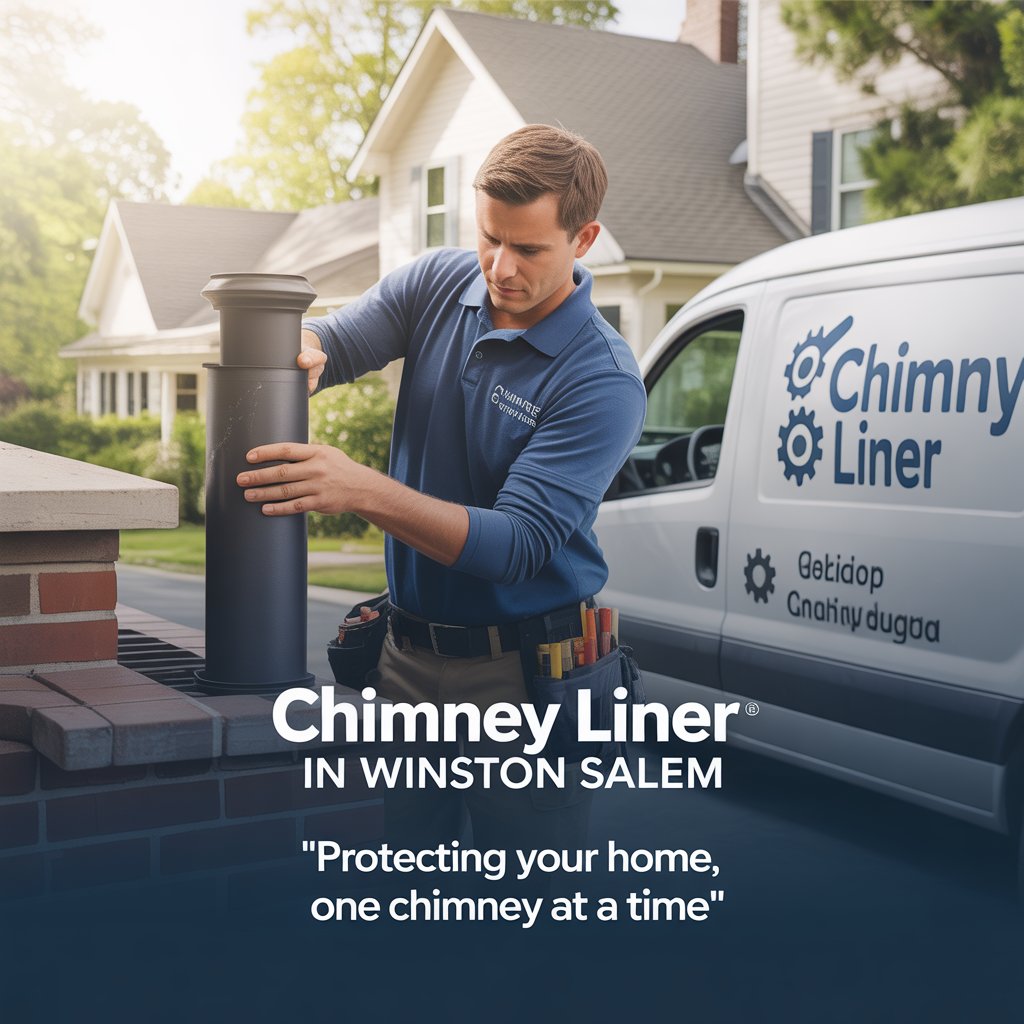If you own a house in Winston Salem and have a wood stove or fireplace, your chimney liner is a vitally necessary element to maintaining your system as safe and efficient as possible. A chimney liner is not some optional upgrade suddenly it’s a protective shield that guards your chimney walls, prevents heat transfer, and keeps your house from burning. Not all liners are created equal, though. Depending on your heat source, home age, and cost, one will be better for your system than another. So let’s examine the pros and cons of the most common chimney liner choices so you can make the most informed decision for you. You’ll be a pro by the time you finish reading. And you’ll be able to exactly know when it’s time to go shopping for a new Chimney Liner.
Knowing Chimney Liners: What They Really Do
Consider a full chimney liner like a safeguard between your fireplace and your house. Without it, heat, moisture, and combustion gases might penetrate your masonry or even your living areas. Liners assist with draft regulation, enhance appliance performance, and prevent smoke from escaping through leaks in the system. They also shield against hazardous creosote accumulation, which can ignite a chimney fire. In Winston Salem, where frequent seasonal burning is the standard, keeping your liner in top shape is more than prudent it’s a safety and cost-saving issue.
Types of Chimney Liners and Their Pros & Cons
There are three broad types of chimney liners: clay tile, metal (most commonly stainless steel), and cast-in-place. Each has its own positives and negatives depending on your chimney’s design, function, and local building codes.
| Liner Type | Pros | Cons |
| Clay Tile | Affordable, long-lasting (up to 50 years), heat-resistant | Can crack under thermal stress, hard to repair, poor for gas appliances |
| Stainless Steel | Durable, corrosion-resistant, works with all fuels | Costs more upfront, may require insulation |
| Cast-in-Place | Strengthens chimney, seamless installation, good insulation | More expensive installation, less common |
There’s a unique benefit to each option. For example, clay tiles are a perfect choice for wood-burning fireplaces but are not very effective in moderate temperature variation or gas-burning units. Stainless steel liners, on the other hand, are bendable, adaptable, and cleanable just the ticket if you’ve got a stove insert or plan to replace appliances in the future.
Safety and Cost Considerations
Safety should be your first reason for inspecting your liner. An old or improperly sized liner could allow carbon monoxide to leak into your house or increase the risk of a chimney fire. Metal liners, especially stainless steel, are also rust-proof and most likely the safest option for homeowners who want to ensure safety and save money in the long run. Cost being ignored, of course. While less costly, replacement may be expensive if tiles crack or degrade with the passage of time.
Following is a short overview of rough Winston Salem prices:
| Liner Type | Average Cost (Including Labor) |
| Clay Tile | $2,000–$3,500 |
| Stainless Steel | $2,500–$5,000 |
| Cast-in-Place | $4,000–$7,000 |
Disclaimer: Chimney height, accessibility, and structural repairs may impact actual costs.
The Role of Chimney Flue Liner Performance
Your chimney flue liner (an LSI abbreviation for chimney liner) serves more than just to allow smoke to exit—it plays an important part in temperature and efficiency management. An appropriately sized and properly fitted flue liner helps to equalize draft, preventing dangerous backdrafts. It also protects your masonry from acidic condensation, especially if you have gas or oil appliances. Humidity is an issue in older chimneys in Winston Salem and stainless steel liners are most commonly recommended to prevent rust and interior damage.
As certified chimney technician Mark Ellis puts it: “The right chimney liner isn’t just about compatibility with your fireplace. It’s about protecting your whole house from long-term fire risks and structural damage.”
Important Features to Consider in a Chimney Liner
When shopping for a chimney liner, look for these essential features:
Safety Rating: Ensure the liner is UL-listed or code-approved for your fuel type.
Insulation: Insulated liners increase draft and reduce condensation.
Durability: Stainless steel liners are corrosion-resistant and ideal for any fuel type.
Custom Fit: A precise fitting liner reduces the risk of overheating or insufficient ventilation.
Warranty: High-quality liners come with warranties of 10–20 years or longer.
Frequently Asked Questions About Chimney Liners in Winston Salem
Q: Do I need to replace my liner?
A: Cracks, missing mortar, or visible damage during an inspection are red flags. You can also observe draft issues or smoke lingering in the room.
Q: Do I need to have a liner if I won’t be using my fireplace much?
A: Yes. Frequent use subjects the chimney to heat and gases. A liner protects against heat damage and maintains the system sealed and tight.
Q: Can I install a chimney liner myself?
A: Yes, technically, but not recommended unless you have experience. Faulty installation can invalidate warranties and building codes.
Q: Do I need to maintain it annually?
A: Yes. An annual inspection guarantees the liner remains in good condition, and buildup or cracks can be detected early.
Conclusion: Choose the Right Liner Before It Is a Problem
Selecting a good chimney liner is not about being cheap—it’s about protecting your home and family. Winston Salem’s cold winters and heavy fireplace usage mean your chimney is working overtime. Whether you choose traditional clay tile or a shiny new stainless steel system, an excellent installation today will spare you headache and expense down the road. And remember: a professional inspection is always the way to go. When it comes to safety and efficiency, your chimney liner isn’t receiving the care that it needs.
Read More: Chimney Sweep
